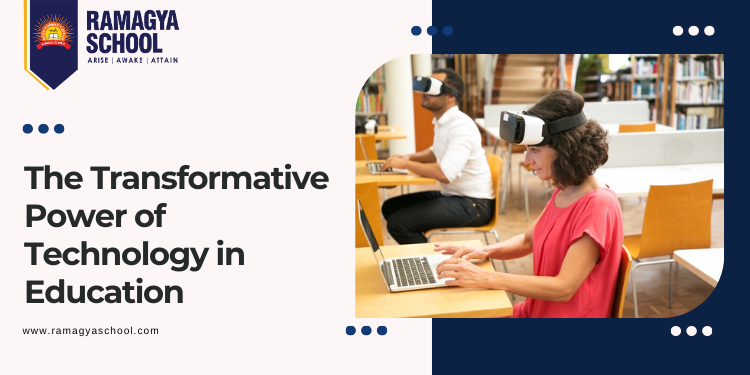Technology is everywhere. It’s at our homes, workplaces and is increasingly becoming an integral component in our schools. Technology integration in education isn’t only about using expensive gadgets or programs; it’s about changing the way students learn as well as how teachers instruct them. Let’s look at the main advantages of using technology in education, and find out why it’s a game changer.
- Enhanced Engagement and Active Learning
Imagine sitting in a class where, instead of watching a teacher’s lecture you are able to interact with classes using computers or tablets. Technology in the classroom can make learning more fun and exciting. Educational games, educational apps and multimedia tools draw your attention and make learning more enjoyable.
As an example, rather than reading books about the past it is possible to explore the history of ancient civilizations using virtual tours of historic sites. This type of active learning is not just a way to keep you entertained and engaged, but it can also help you to remember and better understand the subject.
- Personalized Learning Experiences
Every person is learning at their personal speed and at their own pace. Technology in the classroom can help teachers meet their individual needs. Through adaptive software for learning, progress will be tracked in real time. If you find an area difficult, the program can provide additional training or alternate explanations until you understand the concept.
However when you are a pro at something, it could provide more sophisticated information to keep you interested. This individualized approach will ensure that you receive the assistance you require exactly when you require it, which makes learning more efficient and enjoyable.
- Access to a World of Knowledge
In the past, education was limited to the information contained in your textbooks, or what your teacher could tell you. With the advancement of technology in the classroom, the entire world has become your classroom. The internet allows you access to a wealth of sources of information and data.
Are you looking for information on a subject for your project? Find the most recent research, articles and expert opinion online. Online libraries as well as databases permit users to study the subject in depth and remain informed of the latest developments. No matter if you’re studying science or literature, or another discipline, tech integration opens the door to a wealth of knowledge that enhances your education.
- Preparation for Future Careers
We are living in a world in which tech integration is all around us. When you use technology in your education, you’re helping prepare your future self for the career market. Basic computer knowledge, knowing the use of apps and software and even programming are becoming mandatory in various jobs.
When you learn using technology, you’re more than learning new information, but also learning skills that will be beneficial in any profession you decide to pursue. No matter if you’re an artist, scientist or doctor, or an engineer, having a solid understanding of technology can provide you with an edge.
- Improved Communication and Collaboration
Teamwork is an essential quality in our lives and technology can make it much easier. If you’re working with your colleagues on a project or meeting with students from all over the world, tech integration can facilitate collaboration and communication.
Instant messaging, video calls and online collaboration tools enable users to exchange ideas, solve problems and gain knowledge from one another no matter how far. These skills are not just essential for the classroom but are also important in the future, where teams and connections across the globe are becoming increasingly important.
Benefits of Integrating Information Technology (IT) in Education
- Enhanced Learning Experience: Students have access to multimedia content, simulations and educational games designed to meet various preferences and learning styles. This interactive method not only piques students’ attention but also increases retention and comprehension of complicated concepts.
- Personalized Learning Opportunities: Software for adaptive e-learning can alter the intensity and pace of lessons according to students’ strengths and abilities as well as their development. This allows each pupil to receive individualized instruction that allows them to study at their own pace and reach their full academic capabilities.
- Access to Global Resources: Students can conduct their own research and access online libraries and collaborate with their peers worldwide in projects. This ability to access various perspectives and information enriches their education and helps them prepare for a globalized world where cross-cultural understanding and collaboration become increasingly crucial.
- Preparation for Future Careers: Starting with the basics of computer literacy through advanced techniques like digital communication and coding, IT proficiency prepares students to excel in a tech-driven job market. These skills can be used across different industries, making sure that students are prepared to meet the requirements of the current market for jobs.
- Improved Teacher-Student Communication: Emails, online platforms and messaging apps provide immediate feedback and clarity and help create a more cooperative e-learning environment. Teachers can also make use of technology to monitor the progress of their students efficiently and offer prompt interventions when required.
Conclusion
In the end the integration of information technology into the classroom offers a myriad of benefits that alter traditional methods of learning. Through increasing student engagement, personalizing learning and allowing access to global resources, helping prepare for future careers, and enhancing communications, IT empowers both educators as well as students to achieve academic excellence and be ready to enter the digital age.
While we make technological advancements, it’s vital to utilize IT effectively and innovating to create interactive, inclusive and efficient e-learning environments that help students prepare for success in an ever connected world.

